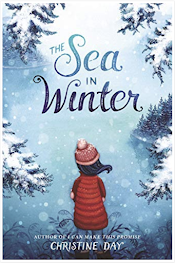Everything You Wanted to Know About Indians But Were Afraid to Ask,
Young Readers' Edition
Written by Anton Treuer (Ojibwe)
Published by Levine Querido
Published in 2021
Reviewed by Jean Mendoza
Review Status: Highly Recommended
Anton Treuer's original Everything You Wanted to Know About Indians But Were Afraid to Ask was published in 2012. Many people, myself included, hoped there would soon be a version for young people. And at last, there is, and it's getting good critical attention, including a Kirkus starred review. Here's what its publisher Levine Querido says about the book:
From the acclaimed Ojibwe author and professor Anton Treuer comes an essential book of questions and answers for Native and non-Native young readers alike. Ranging from “Why is there such a fuss about nonnative people wearing Indian costumes for Halloween?” to “Why is it called a ‘traditional Indian fry bread taco’?“ to “What’s it like for Natives who don’t look Native?” to “Why are Indians so often imagined rather than understood?”, and beyond, Everything You Wanted to Know About Indians But Were Afraid to Ask (Young Readers Edition) does exactly what its title says for young readers, in a style consistently thoughtful, personal, and engaging.
This is AICL's "short-and-sweet review," with four reasons I think teachers, librarians, and parents should read this book and share it with teens.
Reason One for recommending Everything You Wanted to Know: Accessible format and logical organization
Questions are grouped by general subject, starting with Terminology and proceeding through such topics as History, Powwow, Politics, and Economics. The book's Conclusion, "Finding Ways to Make a Difference," tells how, beginning in 1967, several non-Native people in Bemidji, MN, followed the lead of Native residents of the area to combat the blatant systemic racism directed against Native people there. I found it to be a moving and encouraging story, and a good way to end the book -- when many readers are wondering, "Now that I've had my questions answered, what can I do to make things better?" (I put that phrase about following the lead of Native people in bold because Treuer wants to be clear that non-Native people need to understand that true support consists of the support that Native people say they need.)
Reason two: Multiple potential uses.
For individual use, Everything is a handy reference for people seeking answers to their own questions, or looking for concise ways to correct others' mistaken ideas.
The book also is a good base for group conversations. I was able to participate in a teachers' professional development study circle based on Everything in Fall 2021, led by staff of the Illinois State Museum. Thoughtful discussions grew from our responses to the facilitators' questions such as, "What surprised you in what you read?" and "How did you feel about what you learned?"
I can picture teens engaging with the book, guided by similar prompts. If any AICL readers try facilitating such a group with teens, please let us know how it goes.
Reason three: Presentation of varied perspectives
Treuer makes clear that there's no monolithic Native Culture or history to consult in most matters. Single, definitive answers to some questions simply do not exist. But that doesn't mean differences are merely matters of opinion. The author cites sources throughout the book, and readers can look at those and learn. And Treuer's sense of humor helps get his points across.
Reason four: Respect for Indigenous activism as rational and necessary
The author describes situations when he individually opposed behavior that was anti-Indigenous, as well as resistance actions that involved thousands, such as Standing Rock. "Indian" mascots are still present and problematic in schools around the US, and he talks about those, too.
I think readers will especially appreciate that he emphasizes the need for collective action for social justice. For example, he mentions that the murder of George Floyd by a police officer took place in a community with a large Native population, many of whom had no doubt that the Black Lives Matter movement was grounded in reality, because they have experienced and seen similar treatment of black and brown people by law enforcement for generations.
Bonus reason to recommend Everything You Wanted to Know About Indians but Were Afraid to Ask: That cover.
No, a gorgeous cover isn't sufficient reason to recommend a book, but .... just look at it! The beading is the work of Jana Schmieding (Cheyenne River Lakota Sioux), whose other talents also include writing and acting. You may have seen her in the lead role on the sitcom "Rutherford Falls." And she can bead.
This, I think, is essential reading for anyone in the field of education. And librarians. And any non-Native person who has been exposed to the dominant mistaken ideas about Indigenous peoples. In other words, pretty much anybody. Everything You Wanted to Know About Indians But Were Afraid to Ask, Young Readers' Edition, is packed with information for anyone. It can also be a source of support and affirmation for young Native readers. Get it for your school/classroom/library!



